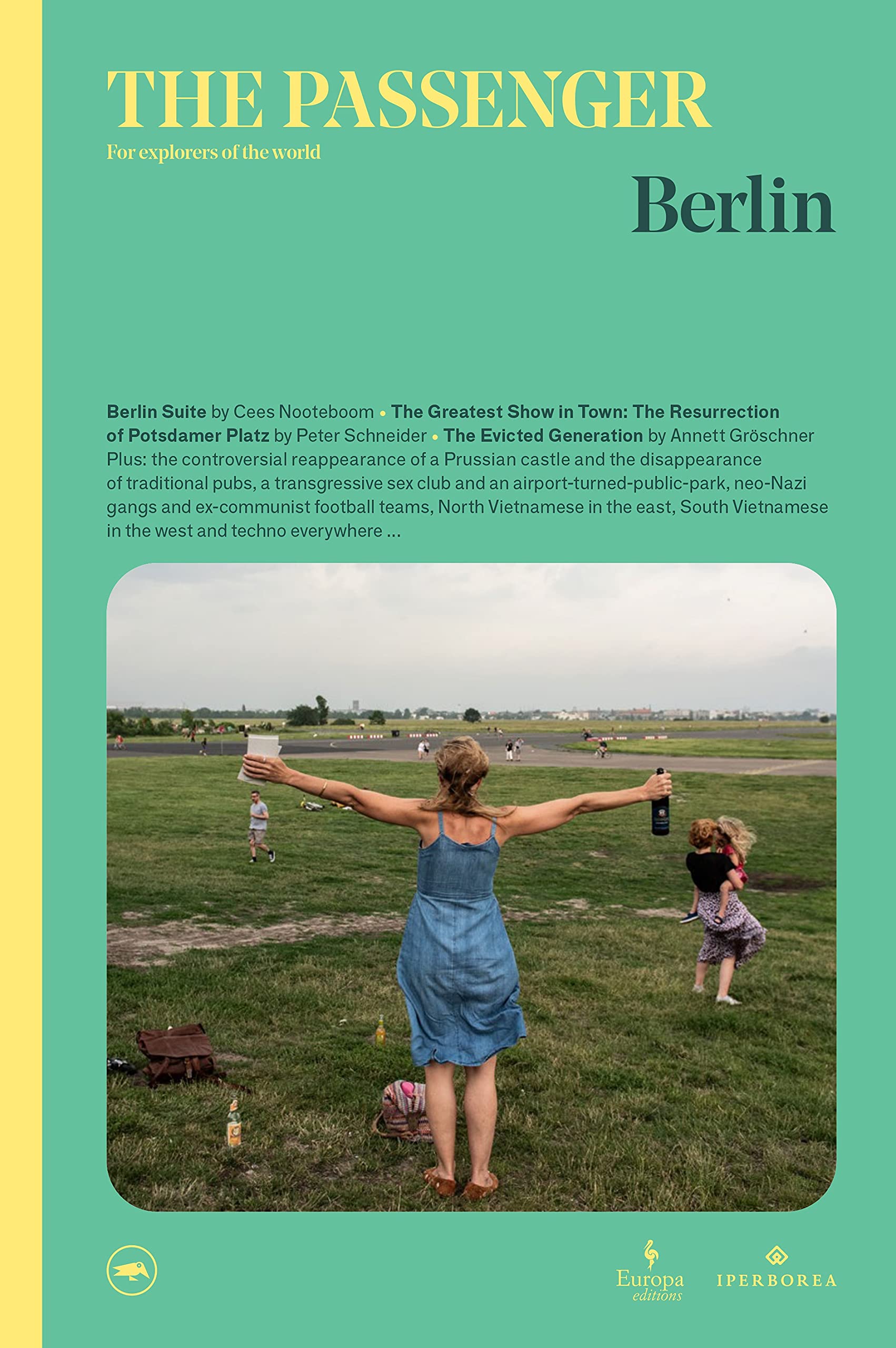Fully-illustrated, The Passenger collects the best new writing, photography, art and reportage from around the world.
IN THIS VOLUME:
When the Circus Came to Town: The Resurrection of Potsdamer Platz by Peter Schneider・Berlin Suite by Cees Nooteboom・Tempelhof: A Field of Dreams by Vincenzo Latronico・plus: the controversial reconstruction of a Prussian castle, Berlin’s most transgressive sex club and its disappearing traditional pubs, a green urban oasis, suburban neo-Nazis, North Vietnamese in the East, South Vietnamese in the West, techno everywhere and much more…
“Berlin is too big for Berlin” is the curious title of a book by the flaneur Hanns Zischler, who joked about the low population density of a city so spread-out and polycentric—one of the reasons why it still inspires feelings of freedom and space. But the phrase also carries a symbolic, broader meaning: how can a single city encompass and sustain such a weighty mythology as that of contemporary Berlin, “the capital of cool”?
In order to find out, it is necessary to travel to the 1990s, the origins of today’s Berlin, when time seemed to have stopped. The scars of a century of war were still visible everywhere: coal stoves, crumbling buildings, desolate minimarts, not a working buzzer or elevator. To visit the city then was a hallucinatory experience, a simultaneous journey into the past and into the future. The city’s youth seemed to have appropriated—and turned into a positive—the famous phrase pronounced by Karl Scheffler at the beginning of the 20th century: “Berlin is a place doomed to always become, never be.”
The abandoned ruins, the hidden gems found at the flea market, the illegal basement raves are a thing of the past. The era of Berlin as a site of urban archeology is over. Almost all the damaged buildings have been repaired, squatters have been removed, the shops selling East German furniture have closed down. Without its wounds, the landscape of the city is perhaps less striking but more solid, stronger. Even the city’s inhabitants have lost some of their melancholia, their romantic and self-destructive streak: today you can even find people who come to Berlin to actually work, not just to “create” or idle their days away. Yet, Berlin remains a youthful city that doesn’t cling to its “poor but sexy” past, whose only sacrosanct principles are an uncompromising multiculturalism and the belief that its future is yet to be written. To quote someone who knows the city well, Berlin is and always will be “pure potential.”
Related products
-
Travel
The Passenger – Greece
“On the Greek island of Ikaria, life is sweet . . . and very, very long. What is the locals’ secret?” from “The island of Long Life” by Andrew Anthony Few countries have received more media attention in recent years and even fewer have been represented in such vastly divergent ways. There’s a downside to […]
279 SEK -
Travel
The Passenger – Japan
“Some Japanese stories end violently. Others never end at all, but only cut away, at the moment of extreme crisis, to a butterfly, or the wind, or the moon.”—Brian Phillips Visitors from the West look with amazement, and sometimes concern, at Japan’s monolithic social structures and unique, complex culture industry; the gigantic scale of its […]
279 SEK -
Travel
The Passenger – India
Fully-illustrated, The Passenger collects the best new writing, photography, art and reportage from around the world. IN THIS VOLUME: Caste: Yesterday, Today, and Tomorrow by Arundhati Roy・The Invention of Hindu Nationalism by Prem Shankar Jha・No Country for Women by Tishani Doshi・plus: the grand ambitions of the world’s most underrated space program, Bollywood’s obsession with Swiss landscapes, […]
279 SEK -
Travel
The Passenger – Paris
Fully-illustrated, The Passenger collects the best new writing, photography, art and reportage from around the world. IN THIS VOLUME: Out of the Shadows by Tash Aw・Against the Stars by Tommaso Melilli・Afraid of Being Free by Samar Yazbek・plus: the Champs-Elysées between luxury and riots, the French Republic between antisemitism and islamophobia, the most elegant Congolese dandies […]
279 SEK




















